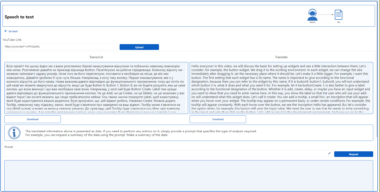UBOS Asset Marketplace for MCP Servers: Revolutionizing AI Integration
In the rapidly evolving landscape of artificial intelligence, the UBOS Asset Marketplace for MCP Servers stands out as a pivotal platform, enabling seamless integration between AI models and external tools. This comprehensive overview delves into the core features, use cases, and the unique advantages of utilizing MCP Servers within the UBOS ecosystem.
Understanding MCP Servers
MCP, or Model Context Protocol, is an open protocol that standardizes how applications provide context to Language Learning Models (LLMs). The MCP Server acts as a bridge, facilitating the interaction between AI models and external data sources and tools. This capability is crucial for businesses aiming to leverage AI for enhanced decision-making and operational efficiency.
Key Features of MCP Servers
1. Built-in MCP Server
- Express + SSE Server: Operates on ports 54321-54421, ensuring secure origin validation, automatic port selection, and efficient connection management.
- Real-time Event Streaming: Provides real-time updates, enhancing the responsiveness and interactivity of AI-driven applications.
2. Tool Discovery
- Package Scripts: Detects npm, yarn, and pnpm scripts, supporting monorepo workspaces.
- Local and Global Tools: Identifies tools in local binaries and global installations, ensuring comprehensive tool discovery.
3. Documentation Retrieval
- Command Execution: Executes help commands and fetches version information with secure command validation and error handling.
4. VS Code Integration
- React-based WebView Panel: Offers a user-friendly interface for tool documentation and status bar integration, enhancing developer experience.
Use Cases
1. Enhanced AI Model Integration
Businesses can leverage MCP Servers to integrate AI models with existing tools and data sources, facilitating more informed decision-making processes. This integration allows AI models to access real-time data, providing insights that are both timely and relevant.
2. Streamlined Development Workflows
For developers, the seamless integration with VS Code and the automatic tool discovery features reduce the time spent on manual configuration, allowing for a more efficient development process.
3. Secure and Scalable AI Deployments
With robust security features, including tool name validation and command injection prevention, MCP Servers ensure that AI deployments are both secure and scalable, meeting the demands of enterprise-level applications.
The UBOS Advantage
UBOS, a full-stack AI Agent Development Platform, is dedicated to bringing AI capabilities to every business department. By orchestrating AI Agents and connecting them with enterprise data, UBOS facilitates the development of custom AI Agents using LLM models and Multi-Agent Systems. The integration of MCP Servers within the UBOS platform enhances these capabilities, providing businesses with the tools they need to stay ahead in the AI revolution.
Conclusion
The UBOS Asset Marketplace for MCP Servers is more than just a tool; it is a gateway to a new era of AI-driven business solutions. By providing a robust, secure, and scalable platform for AI model integration, UBOS empowers businesses to harness the full potential of artificial intelligence, driving innovation and growth.
Explore the possibilities with UBOS and MCP Servers, and transform your business operations with cutting-edge AI technology.
MCP Tools Documentation
Project Details
- patelnav/my-tools-mcp
- Last Updated: 2/23/2025
Recomended MCP Servers

A MCP Server for beancount query and transaction submmit.

An MCP server for interacting with the Africa’s Talking Airtime service. It allows clients to topup airtime to...

LinearAlgebra, Probability, Statistics

MCP sever for controlling Elektron devices using LLMs


3D Maps for OpenSceneGraph / C++14
DevContext is a cutting-edge Model Context Protocol (MCP) server designed to provide developers with continuous, project-centric context awareness....
MCP server for fetching, parsing and crawling sitemaps of a given website
 From vibe coding to vibe deployment. UBOS MCP turns ideas into infra with one message.
From vibe coding to vibe deployment. UBOS MCP turns ideas into infra with one message.






